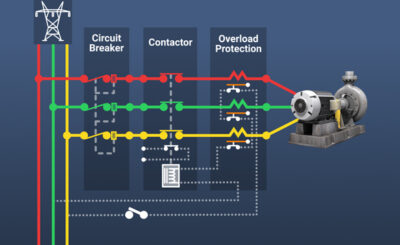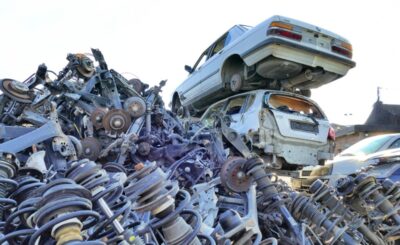Have you ever wondered what happens to cars when they reach the end of the road? Many vehicles get a second chance through a smart process.
This method carefully disassembles old cars to recover usable parts and materials. It turns potential waste into valuable resources.
The industry follows strict environmental rules. These protect our air, water, and soil from harmful substances found in cars.
Modern practices offer high-quality used parts at lower costs. This helps consumers save money while supporting a healthier planet.
Key Takeaways
- Transforms end-of-life vehicles into useful resources
- Follows environmental codes to protect nature
- Provides affordable, quality parts for repairs
- Reduces waste in landfills significantly
- Lowers manufacturing demands and energy use
- Supports circular economy principles effectively
- Maintains vehicle performance with reliable components
Understanding the Basics of Auto Recycling
When a vehicle reaches the end of its useful life, it doesn’t just become scrap. Instead, it enters a sophisticated system designed to maximize value and minimize waste. This process involves careful handling and auto recycling.
Every car that arrives at a facility undergoes initial preparation. Workers drain all fluids and remove any hazardous materials. This protects our soil and water from contamination.
Modern yards maintain extensive inventories of vehicles and components. These are organized for efficient identification and retrieval. Customers benefit from this well-managed selection.
The industry offers both self-service and full-service options. Some people prefer to find and remove parts themselves. Others rely on professional staff for assistance.
Recycled OEM components are road-tested and guaranteed to perform. They typically cost about half the price of new replacements.
Quality assurance processes ensure all parts meet strict performance standards before sale. This gives buyers confidence in their purchases. It maintains vehicle reliability and safety.
Environmental stewardship remains a core principle throughout operations. Proper handling of all materials reduces the carbon footprint of the automotive sector. This commitment benefits our planet significantly.
The service provides economic advantages through job creation and affordable repair solutions. It represents a smart choice for consumers and communities alike.
From Junkyard to Green Industry: A Modern Transformation
Gone are the days of chaotic yards filled with decaying vehicles and questionable practices. The industry has completely reinvented itself with professional standards and environmental responsibility at its core.
Modern facilities operate like well-organized warehouses rather than disorganized scrap piles. They implement strict protocols that prevent soil, air and water contamination. This represents a dramatic shift from past operations.
Environmental controls now govern every aspect of the material recovery process. Workers carefully drain all hazardous fluids before dismantling begins. They sort components with precision to maximize reuse potential.
| Past Practices | Modern Standards |
| Disorganized yards with limited inventory systems | Computerized tracking and efficient retrieval systems |
| Minimal environmental protections | Comprehensive contamination prevention protocols |
| Variable quality assurance | Rigorous testing and performance guarantees |
| Basic safety measures | Certified professional operations and training |
| Limited consumer confidence | Industry certifications and quality standards |
Technological advancements have revolutionized how facilities manage their inventories. Digital systems now track millions of components across North America. This allows for quick identification and retrieval of needed pieces.
The industry has adopted certification programs that ensure consistent quality. These standards cover environmental practices, safety protocols, and part testing. They give consumers confidence in their purchases.
Modern operations recover up to 85% of vehicle materials for reuse or recycling, dramatically reducing landfill waste.
Industry Environmental Report
This transformation extends beyond environmental benefits to economic advantages. Facilities provide affordable OEM components that perform like new. They help reduce repair costs while supporting sustainable practices.
Many operations now contribute to creative scrap car upcycling initiatives that support local economies. These programs empower artisans and green businesses to transform materials into new products.
The evolution represents a deep commitment to both consumer value and planetary health. Today’s professional operations offer reliability that was unimaginable decades ago. They’ve truly transformed scrap into sustainable resources.

The Significant Environmental Benefits of Auto Recycling
Beyond simply clearing space, this process delivers remarkable ecological advantages. It transforms potential waste into valuable resources while protecting our planet.
The service prevents millions of tons of material from crowding landfills each year. Reusing original equipment manufacturer components reduces the need for new production. This conservation effort significantly lowers energy consumption and greenhouse gas emissions.
Every ton of steel recycled saves 2,500 pounds of iron ore, 1,400 pounds of coal, and 120 pounds of limestone.
Environmental Protection Agency
Modern facilities follow strict environmental codes for hazardous material handling. They ensure proper fluid disposal that protects soil and water quality. This responsible approach prevents contamination of natural resources.
The industry contributes to circular economy principles through efficient material recovery. By extending material lifespan, it reduces mining demands for new steel production. This sustainable practice supports global conservation efforts.
Customers benefit from affordable, quality components while supporting ecological responsibility. The process demonstrates how economic value and environmental stewardship can work together harmoniously.
How Auto Recycling Puts Money Back in Your Pocket
Smart consumers are finding remarkable cost savings while maintaining vehicle quality through innovative component reuse.
Recycled OEM components typically cost 50-70% less than new manufacturer parts. You get original equipment quality at significantly reduced prices.
When your car reaches end-of-life status, you can obtain fair market value by selling it to professional facilities. This provides financial compensation while ensuring proper processing.
The economic benefits extend beyond part purchases to reduced repair bills. Many insurance companies approve these components for collision repairs.
Warranty programs on reclaimed parts provide consumer protection and peace of mind for your investment.
Self-service options allow additional savings through personal part removal. This hands-on approach can further reduce costs.
The industry creates value from vehicles that might otherwise be abandoned. It contributes to economic activity through job creation and services.
These practices support affordable vehicle maintenance across communities. Everyone benefits from the financial advantages of responsible material recovery.
Ensuring Quality and Fit with Recycled OEM Parts
Many drivers worry about part compatibility when seeking affordable repairs. Original equipment manufacturer components provide the perfect solution for this concern.
These parts maintain exact factory specifications for your vehicle. They ensure proper fit and performance without compromise.
The service includes rigorous testing before any sale. Technicians verify each component’s function and condition.
Warranty programs protect your investment against defects. This gives customers confidence in their purchase decisions.
Recycled OEM parts typically cost 40-60% less than new replacements while delivering identical performance.
Professional facilities employ trained technicians for proper removal. They understand how to preserve part integrity during extraction.
Advanced inventory systems track compatibility information accurately. This ensures you receive the right part for your specific car model.
The industry maintains certification programs for quality standards. These programs verify proper handling and testing procedures.
Each yard follows strict protocols for component storage. This protects parts from damage before they reach new owners.
The right OEM part ensures seamless integration with vehicle systems. You avoid compatibility issues that can arise with aftermarket alternatives.
This approach benefits both your wallet and the environment. You save money while supporting sustainable practices.
The final quality check confirms performance matching new part standards. This commitment to excellence defines modern professional operations.

The Step-by-Step Auto Recycling Process
Modern vehicle recycling represents a sophisticated dance of environmental responsibility and resource recovery. This systematic approach ensures maximum value extraction while minimizing ecological impact.
The journey begins with environmentally responsible acquisition. Facilities obtain vehicles through purchase programs or donation systems. Each unit enters the processing stream with complete documentation.
Initial preparation focuses on fluid removal and hazard management. Technicians drain all operational liquids including:
- Engine oil and transmission fluid
- Coolant and brake fluid
- Refrigerant and windshield washer solution
Hazardous materials receive special attention during this phase. Workers identify and isolate components like airbags and batteries. These items require specialized handling and disposal protocols.
Professional facilities follow Canadian environmental regulations for hazardous material management, ensuring community safety and ecological protection.
Component recovery represents the core value-creation phase. Technicians carefully remove usable parts using proper tools and techniques. This precision work preserves component integrity and function.
Each recovered part undergoes thorough cleaning and testing. Quality control measures verify performance standards before inventory entry. This ensures reliability for future vehicle applications.
| Processing Stage | Key Activities | Environmental Safeguards |
| Vehicle Intake | Documentation review and initial assessment | Fluid containment systems and spill prevention |
| Hazard Removal | Battery extraction and airbag neutralization | Specialized disposal channels for hazardous materials |
| Part Recovery | Careful removal of reusable components | Tool calibration and technique training |
| Quality Assurance | Cleaning, testing and certification | Performance standards verification |
| Final Processing | Metal shredding and material separation | 99% material recovery rate achievement |
Inventory management systems track all available components. Computerized databases organize parts by vehicle make, model and year. This enables efficient customer searches and orders.
Sales channels distribute components through various methods. Some customers visit facilities for self-service selection. Others order through online platforms with shipping options.
The remaining vehicle shell undergoes final processing. Large shredders reduce the structure to manageable pieces. Advanced separation systems sort different metals for smelting.
Modern operations achieve remarkable 99% material recovery rates. This near-total utilization demonstrates industry commitment to sustainability. The process transforms retired vehicles into valuable resources.
Throughout all stages, facilities maintain strict compliance with regulations. Environmental protocols govern every aspect of operations. Quality standards ensure component reliability and customer satisfaction.
Responsible Ways to Retire Your Vehicle
When your car has served its purpose, proper retirement matters more than you might think. The right approach protects our environment while providing fair value.
Certified facilities follow strict environmental protocols throughout the retirement process. They ensure hazardous materials receive proper handling and disposal.
Professional retirement prevents 90% of vehicle materials from reaching landfills through responsible recovery methods.
Canadian Environmental Assessment
The retirement journey begins with accurate price assessment for your vehicle. Many facilities offer free evaluations based on make, model, and condition.
Documentation transfer completes the legal ownership change properly. This ensures your vehicle enters the system with clear title history.
| Retirement Option | Key Benefits | Environmental Impact |
| Certified Facility | Fair market value payment | Full regulatory compliance |
| Charity Donation | Tax receipt benefits | Professional processing guaranteed |
| Trade-in Program | Convenient replacement | Manufacturer-approved standards |
Donation programs offer excellent alternatives for retiring your car. These initiatives support charitable organizations while ensuring eco-friendly processing.
Many charities partner with certified vehicle retirement services that handle everything professionally. You receive tax benefits while supporting good causes.
Proper retirement prevents environmental contamination from abandoned vehicles. Fluids and hazardous components get managed according to strict codes.
The industry maintains high standards through certification programs. These ensure consistent quality and environmental responsibility across all operations.
Owners gain peace of mind knowing their car gets processed responsibly. This completes the vehicle lifecycle with dignity and ecological care.
Retired OEM parts often find new life in other vehicles through professional service channels. This sustainable approach maximizes resource value.
Choosing certified retirement supports industry best practices and environmental stewardship. It represents the final responsible act of vehicle ownership.
Your Role in the Future of Auto Recycling
Your choices today shape tomorrow’s sustainable automotive landscape. Every time you select reclaimed parts for your car repairs, you support valuable resource recovery.
Choosing certified facilities ensures proper handling at your vehicle’s end-of-life. These professional yard operations protect our environment through strict compliance standards.
Consumer demand drives quality improvements across the sector. When customers choose recycled components, they encourage higher service standards.
The industry continues evolving with advanced inventory systems and electric vehicle capabilities. Your participation helps develop these sustainable practices further.








